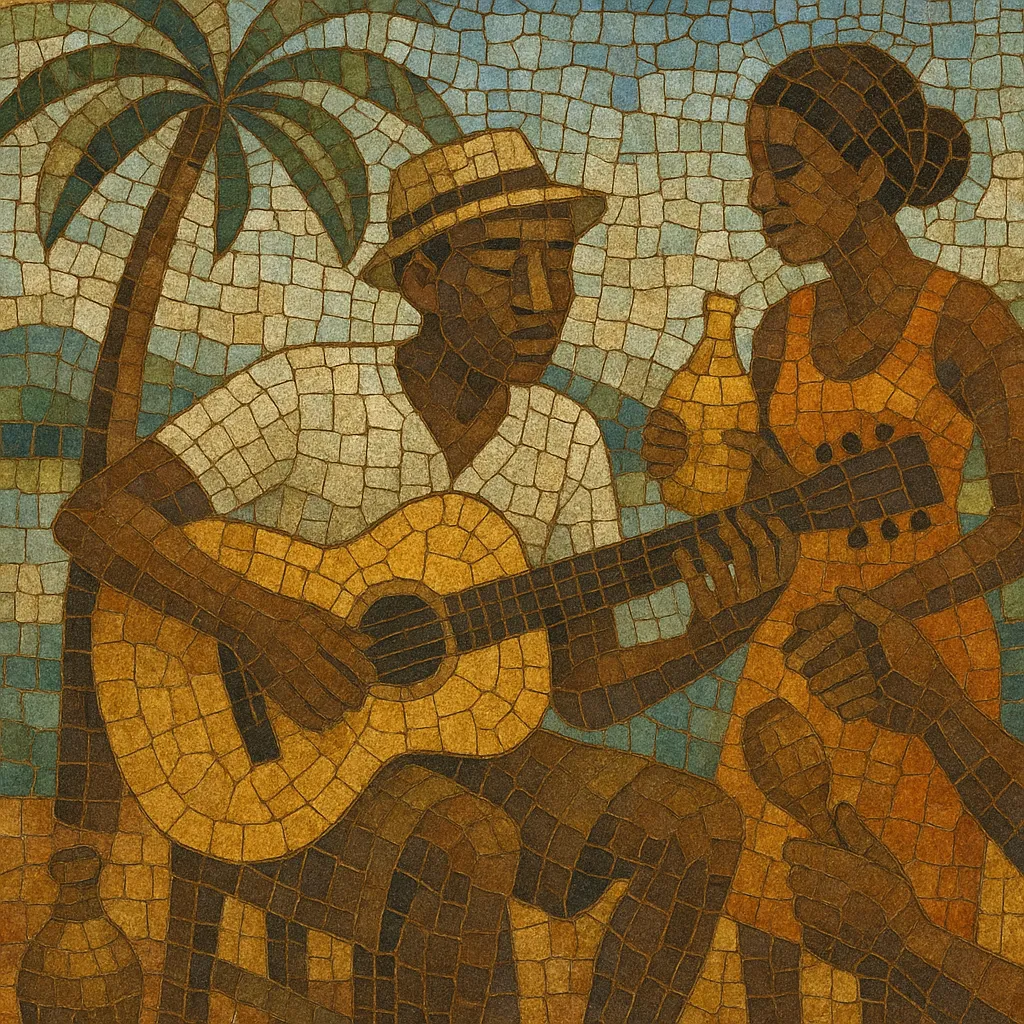Palm‑wine is a coastal West African guitar music that grew out of informal gatherings in palm‑wine bars and sailors’ quarters along the Sierra Leone–Liberia–Ghana–Nigeria coastline.
It is characterized by lilting, finger‑picked acoustic guitar patterns, relaxed mid‑tempo grooves, and conversational, often humorous storytelling lyrics delivered in local languages or pidgin.
The style blends indigenous rhythms and call‑and‑response singing with elements sailors encountered abroad—especially sea shanties and Caribbean song forms—resulting in a light, danceable, and intimate sound sometimes known in Sierra Leone as maringa.
Its small‑ensemble format (guitar, shakers, hand percussion, bottle, or spoons) and convivial feel made it the social soundtrack of coastal taverns, later seeding guitar‑band highlife and early juju in the region.
Palm‑wine music emerged in the port cities and fishing communities of Sierra Leone and Liberia in the early 1900s, where Kru and other West African sailors worked on British and other merchant ships. These sailors absorbed European sea shanties and Caribbean songs, then adapted them to local sensibilities using the acoustic guitar—an instrument circulating through maritime networks. The music was played in informal settings, especially taverns where fermented palm sap was served, which gave the genre its name.
By the 1920s, a recognizable guitar idiom took shape: steady, alternating bass with syncopated treble figures, interlocking parts when two guitars were available, and light percussion (bottle, spoons, shakers). In Sierra Leone the style was often called maringa, while in the Gold Coast (modern Ghana) it fed directly into burgeoning guitar‑band highlife. Storytelling, topical humor, and social commentary—rooted in griot and work‑song traditions—became central.
As it spread along the coast to Ghana and Nigeria, palm‑wine intertwined with local rhythms and urban nightlife, influencing early juju ensembles and acoustic highlife guitar bands. Recording opportunities grew, and artists like Ebenezer Calendar in Sierra Leone and pioneers in Ghana documented the sound, solidifying its repertoire and guitar techniques.
While amplified dance‑band highlife and later Afrobeats captured mainstream attention, palm‑wine persisted as a roots style and a key influence on West African guitar traditions. International reissues and acoustic revivals have renewed appreciation for its intimate groove, deft fingerpicking, and warm social storytelling.


